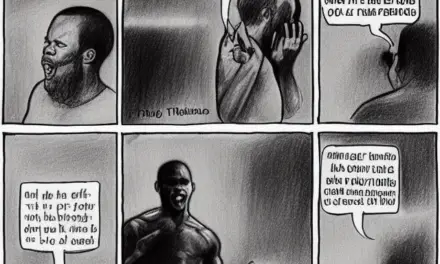
People all over the world are trying to find ways to live healthier lives that bring more balance into their lives from both a physical and a mental or emotional standpoint. This is something that has been practiced in Eastern medicine for literally thousands of years. However, Western medicine has largely ignored these types of practices, instead choosing to focus on physical ailments in themselves and ignoring the mental or emotional aspect of health. However, this is a practice that many people have found to be greatly flawed. As a result people in Western cultures have started searching for ways to incorporate alternative forms of medicine into their daily routines. In fact, many individuals who suffer from chronic illnesses are turning to holistic medicine as a means of alleviating their symptoms and regaining their health. This is especially true for anyone who has found many of the Western treatments to be ineffective.
One such holistic practice is called Ayurvedic medicine. The practice of Ayurveda consists of finding balance with both the physical body and with the personality traits of an individual. People who practice Ayurvedic medicine believe that it is necessary for an individual to understand how physical characteristics and personality traits interact with one another to create certain circumstances. When the physical and emotional sides of an individual are in balance, Ayurvedic practitioners believe that physical health is increased and the best personality characteristics of that particular individual are displayed. Conversely, when anything is out of balance, either physically or emotionally, the individual’s physical health suffers and their personality traits may be affected to the point where they are mentally or emotionally unstable in some fashion. Practitioners of Ayurveda have a thorough understanding of the dosha. The dosha is a physical and mental balance that occurs within an individual. There are three main types of dosha categories. They are Vata, Pitta and Kapha.
What is my dosha?
If you are trying to understand more about your dosha, it is important to note that there are typically two out of the three doshas that are typically dominant in an individual. The third type of dosha is present but is usually not expressed to the degree that the other two types are displayed. It is important to understand how your dosha relates to your physical and mental well being. This can be determined by looking at a number of factors which will be discussed in the next paragraph. However, it is important that you first understand what the different types of dosha categories are.
Vata
The Vata is related to the nervous system. The physical characteristics of the Vata include being rather tall. Often people who have the Vata dosha as their most dominant category are also slim. These individuals have a tendency to be cold much of the time and therefore do not tolerate cold temperatures well. Vata is related to everything associated with the nervous system, so issues with breathing or with the heartbeat are often associated to the Vata category. Intuitively, these individuals can express a great deal of creativity and they are typically happy, bubbly people that get excited easily about a variety of things. Conversely, these individuals also have a tendency to worry a great deal and the otherwise harmless excitability that they often express can easily turn into extreme worry. As a result many people who display Vata tendencies also have high levels of anxiety much of the time.
Pitta
People who are in this group have a very strong build. Many of these individuals are not too tall nor are they too short. It is possible, however, for them to have a rather compact build that is muscular in nature. Physical problems which are typical in this category include problems with the heart and the eyes. These individuals also typically dislike heat and do not tolerate it well. Emotionally, individuals in this group are often natural born leaders. When they are in balance they can express a great deal of contentment. However, when they are out of balance the contentment typically turns to anger and frustration.
Kapha
Kapha individuals have a strong build and are typically rather heavy. They have a tendency to be overweight much of the time. They also tend to develop chronic sinus problems. Kapha individuals are excellent at forgiving others and expressing a great deal of love but they also suffer from depression much of the time and they can feel a lot of insecurity about themselves and about their lives in general.
How Do I Tell My Dosha?
Finding your dosha is often as simple as taking a quiz in order to gain better insight about your dominant dosha. However, a quiz is not necessary in order to gain valuable insight about your dominant dosha. Much of it can be determined based on your body type. Are you tall and skinny? Are you short with a heavy build? Do have a compact build that is muscular? This is your first clue to determining your prominent dosha. If you are tall and skinny there is a good chance that you are Vata. On the opposite side of the spectrum, people who are short with a heavy build are often Kaphas and people who are muscular and neither too tall nor too short are often Pittas. You can also determine your dosha by your personal characteristics and traits. Moreover, you can typically discover your dominant dosha by your propensity to like or dislike a certain type of weather. Vata and Kapha individuals almost always dislike the cold while Pitta individuals often have an extreme dislike for the heat.
Depending on your prominent dosha, there are things that you can do to improve your physical health and your emotional well being. By having a better understanding of your dominant personality traits and the likelihood that you may suffer from certain medical conditions as a result of your primary dosha, you can better understand how to show the best side of yourself from an emotional standpoint and to stave off medical conditions. For example, Pitta individuals have a natural tendency to have heart problems. Therefore, if this is your primary dosha, you should get plenty of exercise and eat a healthy diet. The same can be said for Kapha individuals because they have a tendency to be overweight.
Staying in Balance
Regardless of what type of dosha you have it can sometimes be difficult to stay in balance. If you find yourself out of balance you may also notice that you begin to experience physical ailments as well as mental or emotional disturbances. In other words, you may become ill. You may also find that you are simply not happy or that you are unable to concentrate. This is especially true for certain dosha types. Remember that Kapha individuals have a tendency to become depressed anyway. Therefore, you should take special precautions not to allow yourself to become out of balance. There are a number of ways that this can be approached. Some approaches are naturally more effective than others. The most effective way to stay in balance is to do everything in moderation and practice a number of different approaches to staying in balance.
One of the most popular ways to stay in balance is to eat a healthy and balanced diet. Depending on your dosha type, certain foods should be avoided while others should be consumed more regularly. For example, Vata individuals should consume large amounts of low fat dairy products as well as fruits that are naturally sweet such as oranges. However, other types of fruits such as apples should be consumed on a less frequent basis. It is also recommended to eat large amounts of vegetables and nuts. Pitta individuals should consume large amounts of vegetables and chicken while minimizing other types of meat. Dairy products are also acceptable. Individuals who predominantly possess a Kapha dosha should also consume large amounts of vegetables but should avoid nuts for the most part. Keep in mind that this is not a comprehensive list and that more information can be found simply by looking up foods that are associated with certain doshas. This article is meant to give examples rather than to provide a comprehensive list, as it would be virtually impossible to list every food.
Aside from food there are also a number of things that can be done to help you stay in balance. Most people use a variety of calming activities such as meditation or listening to music in order to remain in balance. Staying fit and participating in physical activity is also important. Some individuals remain in balance by taking long walks while others participate in fitness classes. Yoga is one of the most effective ways to stay in balance for all dosha types because the very activity of practicing yoga helps you get in touch with yourself and learn how to control the physical aspects of your body in order to better understand the emotional and mental aspects. For instance, learning the art of controlling the breath while performing yogic movements helps you to better understand how to open up and get in touch with deeper emotional issues. This in turn can help you to live a more balanced life.
Perhaps the most important thing to remember when performing activities to stay balanced is that you must find the combination of things that works best for you as an individual. While it is true that you can use your dosha types to guide you, do not allow yourself to feel forced to participate or to avoid an activity in hopes of becoming more balanced. This will likely have the reverse effect. Instead, you should simply do what feels natural while using information about your dosha as a guide. If you enjoy running, allow the activity to calm you and help you to remain in balance with your other daily obligations. By the same token, if you enjoy taking a class, painting or listening music, you can use those things to help you remain balanced and calm.
Practice Makes Perfect
It is also important to remember that learning to lead a more balanced life is something that takes a great deal of practice. Like anything else that is worth doing, it does not take place overnight. Instead, it is something that you must work at on a routine basis. Expect to have setbacks. It is something that naturally occurs in virtually everything that human beings do. There are good days and bad days when you are learning how to do anything and this is no exception. It is important to remember that you should use your dosha as a guide to help you lead a happier and more balanced life where you can be healthier and more content. It is not something that is designed to make you feel undue stress. If you become stressed out over trying to figure out what you should or should not be doing, you are defeating the purpose of doing it to begin with. Start out slow at first, taking small steps toward improving your physical health and your emotional and mental well being. Go from there and allow your feelings to guide you. That is part of learning to become more in touch with yourself and learning to be more balanced. Ignoring your feelings is exactly what you do not want to do. In time, you will begin to see that it is easier to find out what works best for you and you will likely see a dramatic improvement in your physical health as well as your mental and emotional well being. You may also see improvement in your relationships with others and even your performance at work as you learn to balance your life in such a way that you are more in harmony with yourself and with those around you.
In closing, determining your dosha is not as hard as you may think. In fact, by comparing your physical characteristics and your personality traits with the information contained herein you can get a good idea of what your dominant dosha is. One of the easiest ways that you can definitively determine your dosha is to write down your physical traits and your personality traits on a piece of paper and match those categories with this information. This will help you to better understand your dominant dosha and how it affects both your physical well being and your emotional health.












